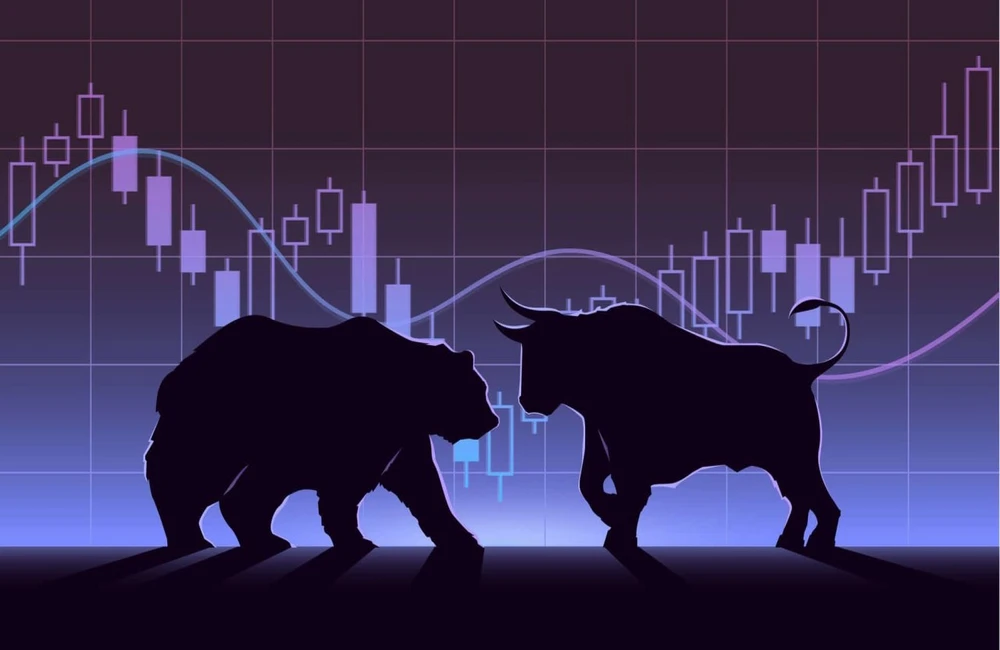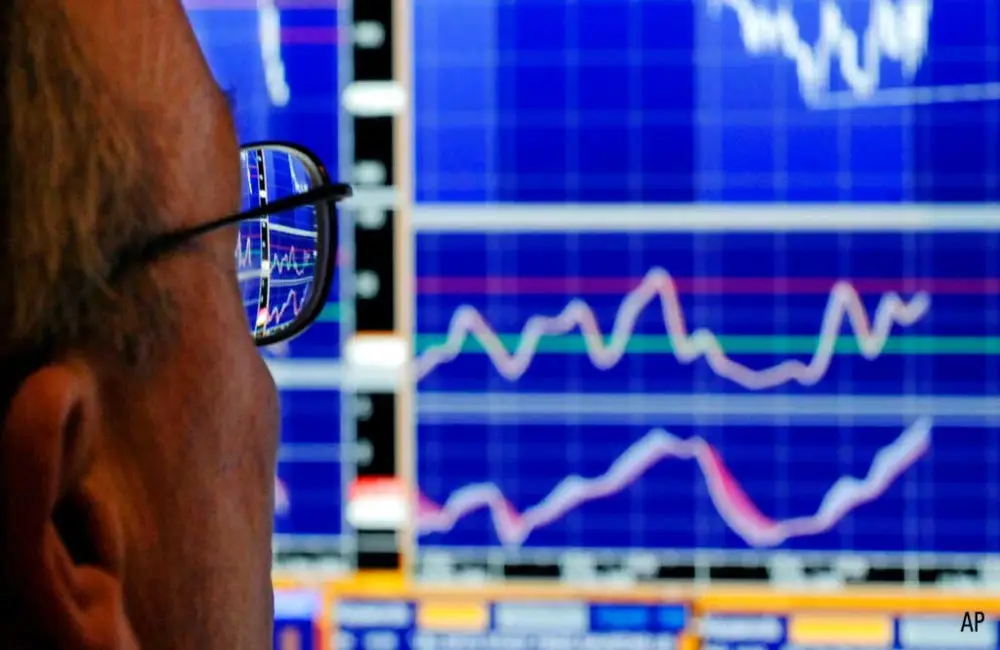ASX futures were 46 points or 0.7 per cent higher at 6906 at 8.00am on Monday, signaling an increase at the open.
In overseas markets, the S&P 500 increased 1.4%. The Dow industrials rose 1 percent and the Nasdaq Composite 1.9 percent. The three gauges all had their strongest month since 2020. To be clear, July was a big month for stocks: The S&P 500 rose 9.1%, and the Dow Jones Industrial Average was up 6.7%, the best monthly performance for each index since November 2020. The tech-heavy Nasdaq Composite rose 12 percent for its best month since April 2020.
Investors took comfort in that idea in recent days after slower economic growth would cause the Fed to raise rates less quickly. They also have been cheered by upbeat signals during earnings season, as forecasts for quarterly profit growth have ticked higher over the last month.
But professional money managers and strategists are also in heated debate over whether stocks can hold on to the recent gains despite persisting monetary tightening and concerning signs about the economy. Many are skeptical.
“I think the market is sort of celebrating victory as if the war against inflation is over,” said Sameer Samana, senior global market strategist at Wells Fargo Investment Institute. “It’s totally at odds with the Fed and Chair Powell’s message this week.”
Commodities Iron ore is 3.4% lower at US$125 as at 5. Brett oil was down by 0.5 per cent to US$103.44 and gold was flat at US$1781.70.
Bonds at the long end experienced the most action at the end of the week, with the yield on 2 Year Australian Government Bonds tumbling to 2.39%, while 10 Year yields plunged to 3.05%. Internationally, 2 Year US Treasury yields increased marginally to 2.88%, however, 10 Year US Treasury yields fell to 2.65%.
Asia
Chinese stocks fell, as the Shanghai Composite Index lost 0.9% to 3253.24, down 4.3% this month. The Shenzhen Composite Index was down 1.0% and the ChiNext Price Index fell 1.3%. Risk sentiment was relatively subdued in July, and corporate earnings will set the tone for market differentiation in August, China Galaxy Securities writes in a note.
Pharmaceuticals, liquor makers and property developers were down. Shanghai Fosun Pharmaceutical fell 5.0% and WuXi AppTec dipped 2.9%, while Wuliangye Yibin slid 4.7% and China Vanke lost 2.5%. But automakers bucked the trend with Great Wall Motor up 1.9% and SAIC Motor 0.7% higher.
Hong Kong’s Hang Seng Index finished the day 2.3% lower at 20156.51 and was 7.9% lower this month, weighed by a selloff in tech stocks as market sentiment was tempered by increased tensions between China and the U.S. over Taiwan. The Hang Seng Tech Index dropped 4.9% to 4331.19.
Alibaba Group was one of the weakest stocks following a WSJ report that billionaire Jack Ma will cede control of fintech titan Ant Group. Other tech stocks suffered losses as well, with Meituan plunging 6.2% and Xiaomi sliding 5.1%.
Wall Street is facing uncertainties about the rise in the number of Covid-19 cases in China, as worries over the spread of the virus weighed sentiment on shares sensitive to consumer demand. Budweiser Brewing Co. APAC tumbled 8.2%, sportswear firm Li Ning Co. declined 4.2% and hotpot-chain operator Haidilao International Holding Ltd. lost 2.1%.
Japan’s Nikkei Stock Average shed 0.05% to end at 27801.64, after having been higher earlier in the session as regional equity markets weakened and a strengthened yen pressured the benchmark index. Among specific movers, Nissan Motor fell 4.8% after its 1Q net profit tumbled 59% on year. Murata Manufacturing tumbled 2.7% after 1Q net profit fell 2.6% on year.
Earnings are in focus. Daiichi Sankyo lost 1.8% after 1Q net profit missed the ¥25.61 billion forecast in a Quick poll of analysts.
Europe
European stocks were higher on the back of strong corporate earnings and above-forecast eurozone economic growth data. The pan-European Stoxx Europe 600 rose 1.3 percent, the German DAX climbed 1.5 percent and the CAC 40 in France advanced 1.7 percent.
The eurozone economy expanded 0.7% quarter-on-quarter in Q2 instead of 0.1% expected in a WSJ survey of economists. That helped to “alleviate fears of an imminent contraction in the region,” writes IG analyst Joshua Mahony.
London’s FTSE 100 enjoyed a strong end to the week, closing up 1.06% on Friday above the 7400 mark for the first time in the early part of June, on a strong day for banks and miners.
“It has been another positive week for European markets, as investors have taken some comfort from earnings numbers that have been mostly better than expected, despite concerns about the growth outlook,” says Michael Hewson, chief market analyst for CMC Markets UK, in a research note.
“Such gains we are seeing this month have provided a welcome relief, though the theory that central banks might be forced to take their foot off the number of rate hikes they can deliver is also helping to push yields sharply lower again, and by extension making stocks look that much more attractive generally,” says Hewson.
North America
Stocks rose on Friday, pushing major indexes up for the best month since 2020, as they continued to recover from a dismal first half.
The S&P 500 advanced 9.1 percent for the month and the Dow Jones Industrial Average added 6.7 percent, making July the best month for both indexes since November 2020. The tech-heavy Nasdaq Composite rose 12 percent for its best month since April 2020.
In recent days, investors have seized on the notion that slower economic growth would lead the Fed to introduce rate increases at a more gradual pace. They have also been emboldened by upbeat signals during earnings season, as the outlook for quarterly profit growth has tacked higher over the last month.
But money managers and strategists are also debating whether stocks can retain the recent gains in an environment of continued monetary tightening and worrisome signals about the economy. Many are skeptical.
“It certainly feels as though the market has jumped the gun in terms of calling the end to the inflation story,” said Sameer Samana, senior global market strategist at Wells Fargo Investment Institute. “It’s just completely out of line with what the Fed and Chair Powell communicated this week.”
The S&P 500 gained 57.86 points, or 1.4 percent, to 4,130.29 on Friday. The Dow industrials gained 315.50 points, or 1 percent, to 32,845.13. The Nasdaq Composite gained 228.09 points, or 1.9%, to 12390.69. The three gauges posted gains for the week.
Yet the major indexes remain deeply in the red for 2022, after the S&P 500 posted its worst first half since 1970, in June. The benchmark index is now 13 percent lower on the year.
Conflicting economic signals are leaving investors to navigate their way forward without a clear picture of what business conditions will look like in the months to come. The US economy contracted in the second quarter, official data showed Thursday, falling into another recession according to one popular definition. And employers also continued to hire and the unemployment rate stayed low.
“There’s this weird combination of a very strong labor environment and a relatively weak economic environment,” said Michael Vogelzang, chief investment officer at Raleigh, N.C.-based Captrust. “I just don’t think anybody can meaningfully say where this is going to come out without more data.”
And data on Friday revealed strong consumption and wages that could continue to channel pressure on the Federal Reserve to raise interest rates to tamp down inflation. Worker pay and benefits increased 1.3% in the second quarter near a record pace and consumer spending rose 1.1% in June, up from May.
Gains on Friday were across the board, with nine of the S&P 500’s 11 sectors climbing. The biggest sector gainer was energy with a jump of 4.5%, while consumer staples was the biggest lag, falling 0.7%.
Among individual stocks, shares in Procter & Gamble fell $9.15, or 6.2 percent, to $138.91 after the maker of Gillette razors and Ariel laundry products said buyers were beginning to rein in spending in response to several months of strong inflation.
Amazon.com stock jumped $12.67, or 10%, to $134.95, after the tech company said its quarterly revenue increase was more than analysts had anticipated. Shares of Apple gained $5.16, or 3.3 percent, to $162.51 after it said its sales of iPhones extended their growth in the most recent quarter.
Chevron hit a record profit of $11.6 billion for the second quarter, thanks to higher energy prices, sending shares up $13.39, or 8.9 percent, to $163.78. Fellow oil behemoth Exxon Mobil reported a profit of $17.9 billion that sent shares climbing $4.29, or 4.6%, to $96.93.
In the bond markets, the yield on the benchmark 10-year US Treasury note slipped to 2.642 percent on Friday from 2.680 percent on Thursday. Yields rise as prices fall, and have declined in recent weeks amid expectations that the Fed will soon pare back the speed at which it lifts interest rates.
Meanwhile, the yield on the two-year US Treasury was down at 2.897% on Friday. That follows a period when the shorter-term bond has traded at a higher yield than its longer-term counterpart, a condition known as an inverted yield curve that is often seen as a harbinger of a coming recession.
Investors are listening closely for any indication from the central bank about the direction of monetary policy ahead.
The Fed, after increasing its benchmark interest rate by 0.75 of a percentage point for a second straight meeting on Wednesday, signaled that at some point it would almost certainly pull back in order to assess the impact of higher rates on the economy. Roughly 73 percent of S&P 500 companies that have reported quarterly results have come in ahead of profit forecasts, calming money managers who were increasingly worried that earnings would start to slide.
But large numbers of investors remain skeptical about the prospects for the economy and for stocks. With inflation at a 40-year peak, some say that central banks, in the US and beyond, will still be in a rush to tighten rates. The figures confirming that the US economy shrank for a second quarter in a row were another source of the jitters.
“The important thing is that it’s not falling off a cliff,” said Brian O’Reilly, head of market strategy at Mediolanum International Funds, of earnings. “Consumer demand remains relatively solid.”
Still, Mr. O’Reilly said he believes the stock bounce will wane. “We’re still facing a fairly dicey economic environment,” he said, noting there’s little evidence that inflation is peaking.























